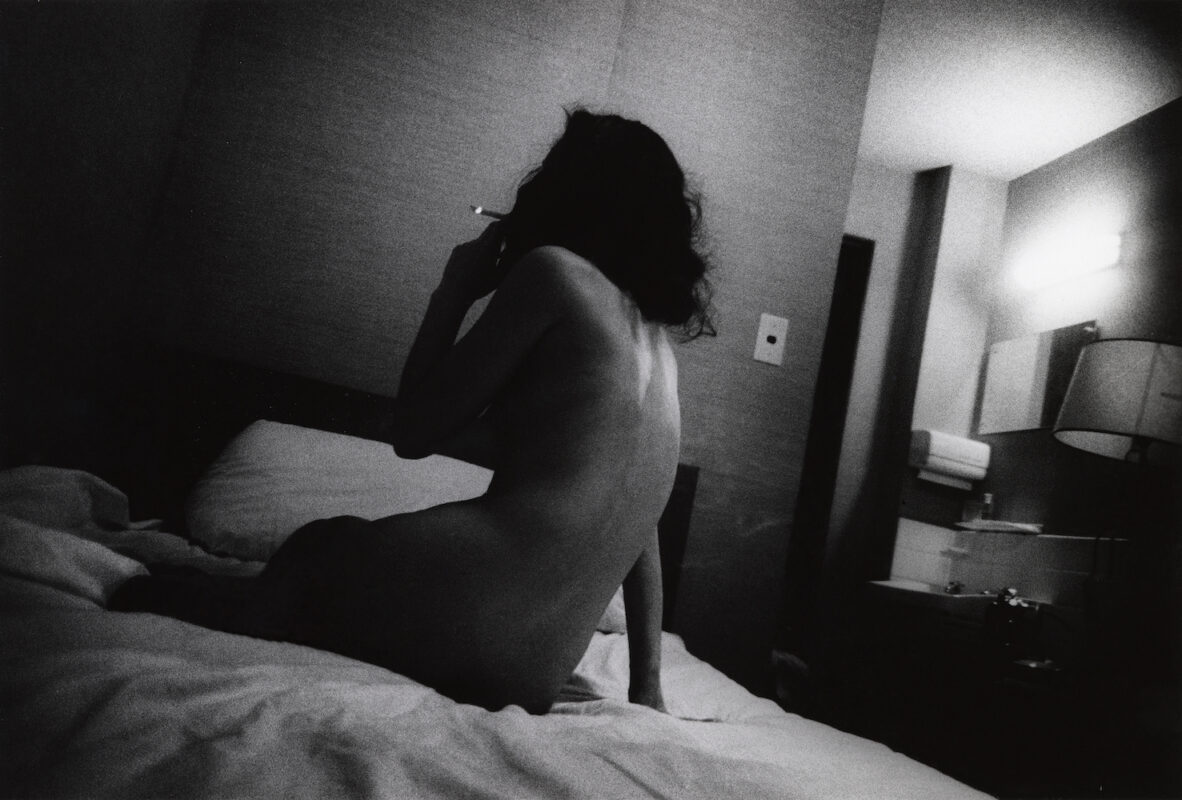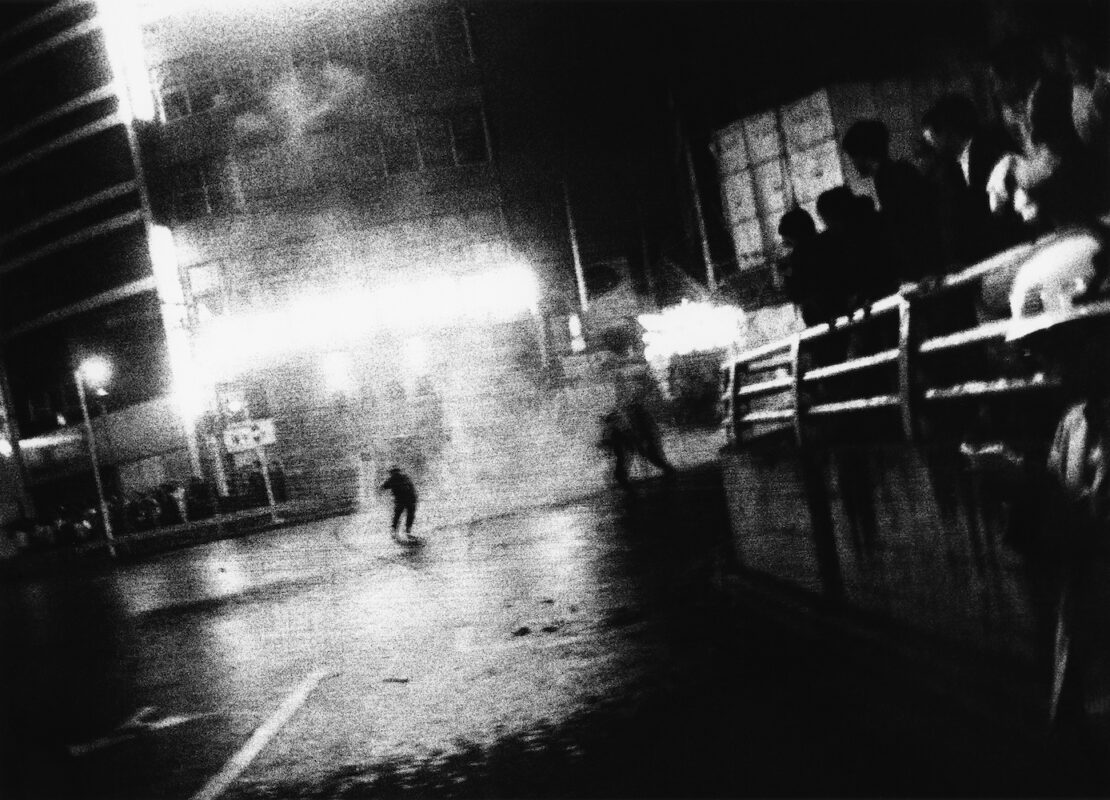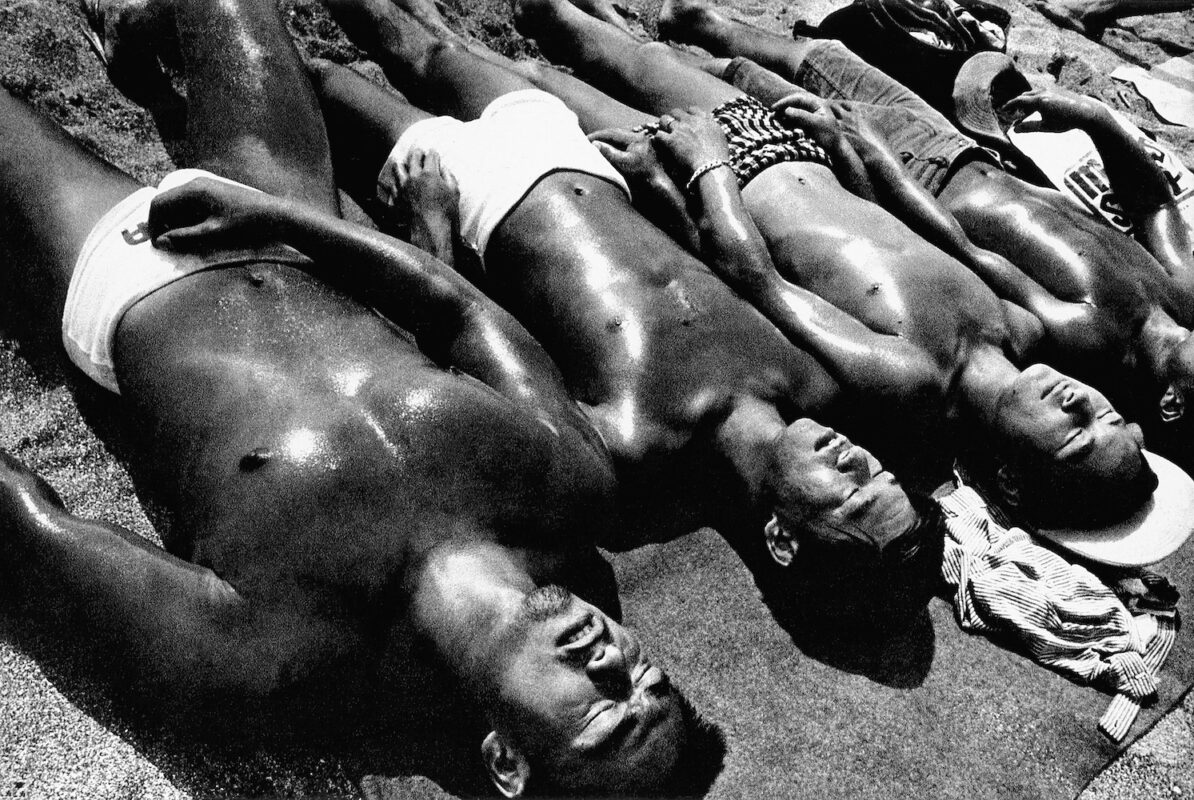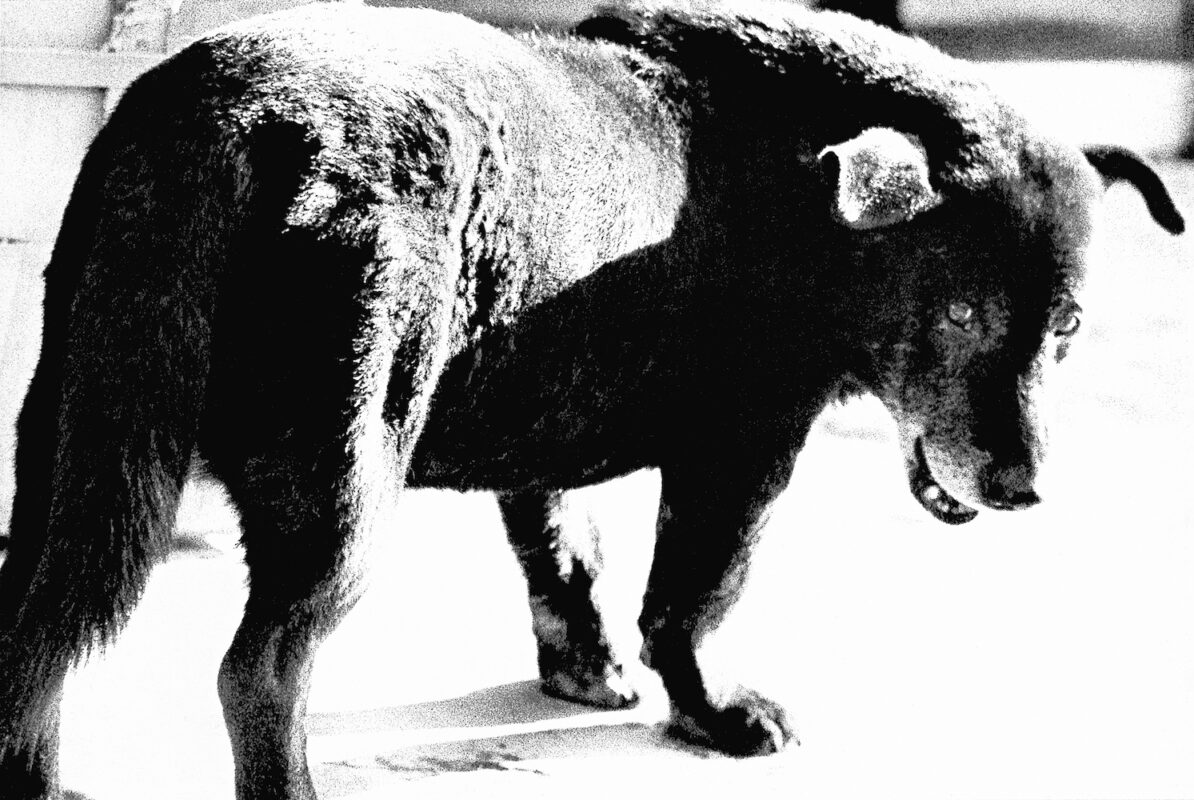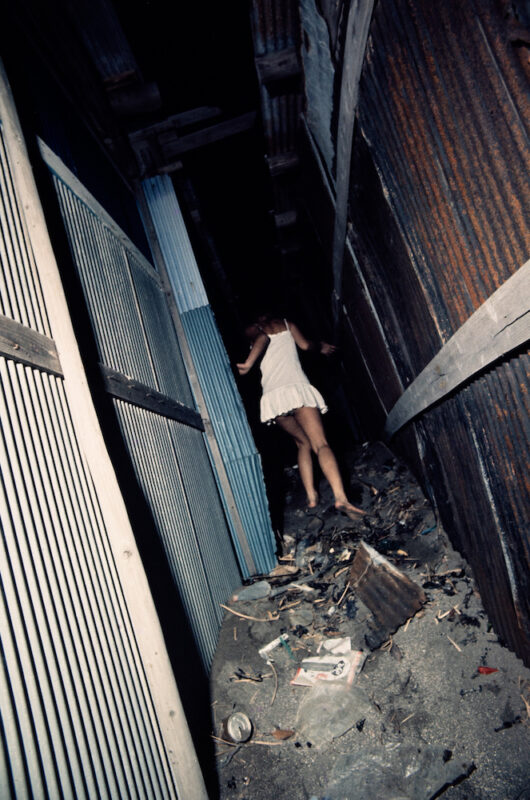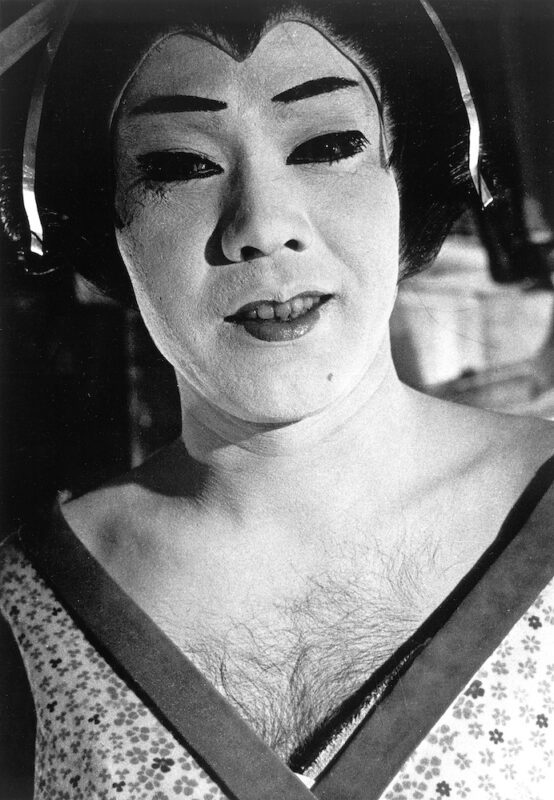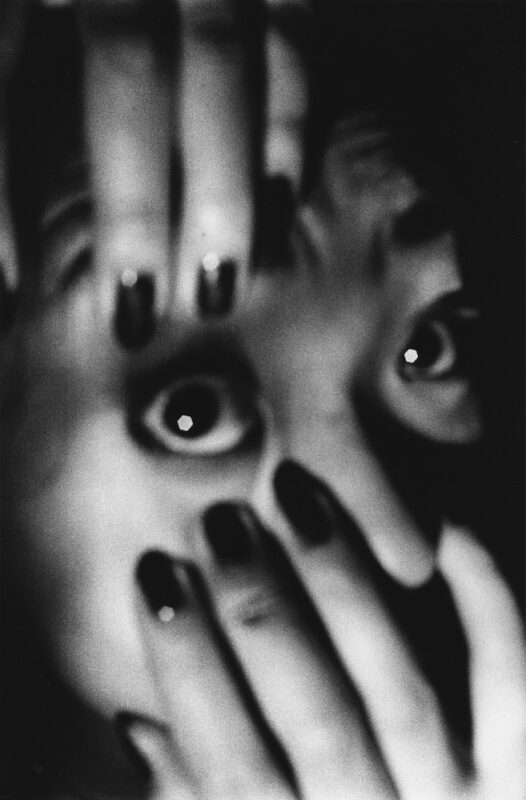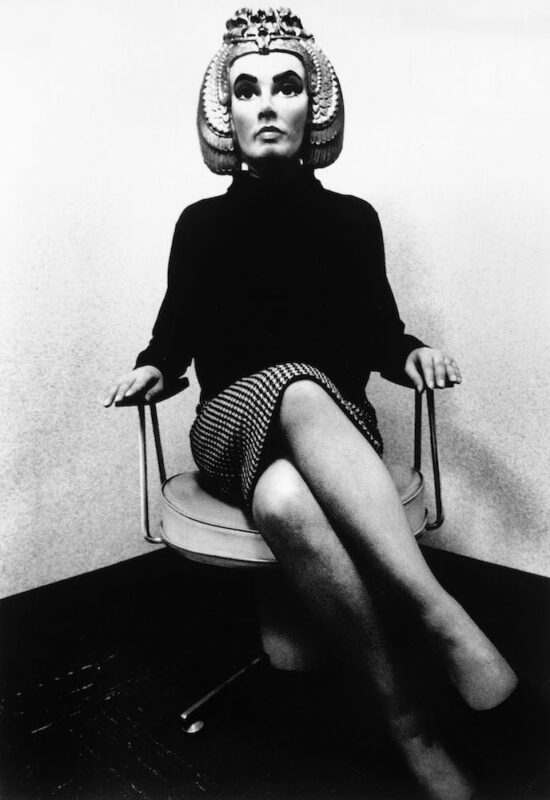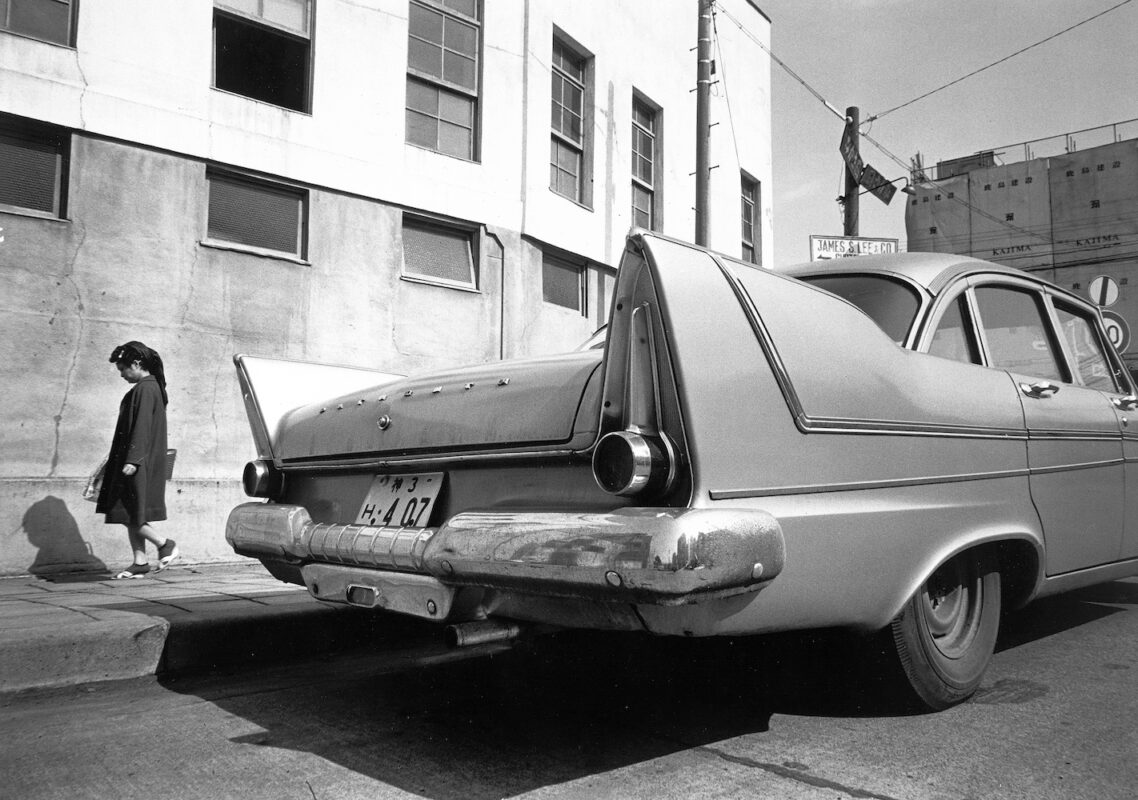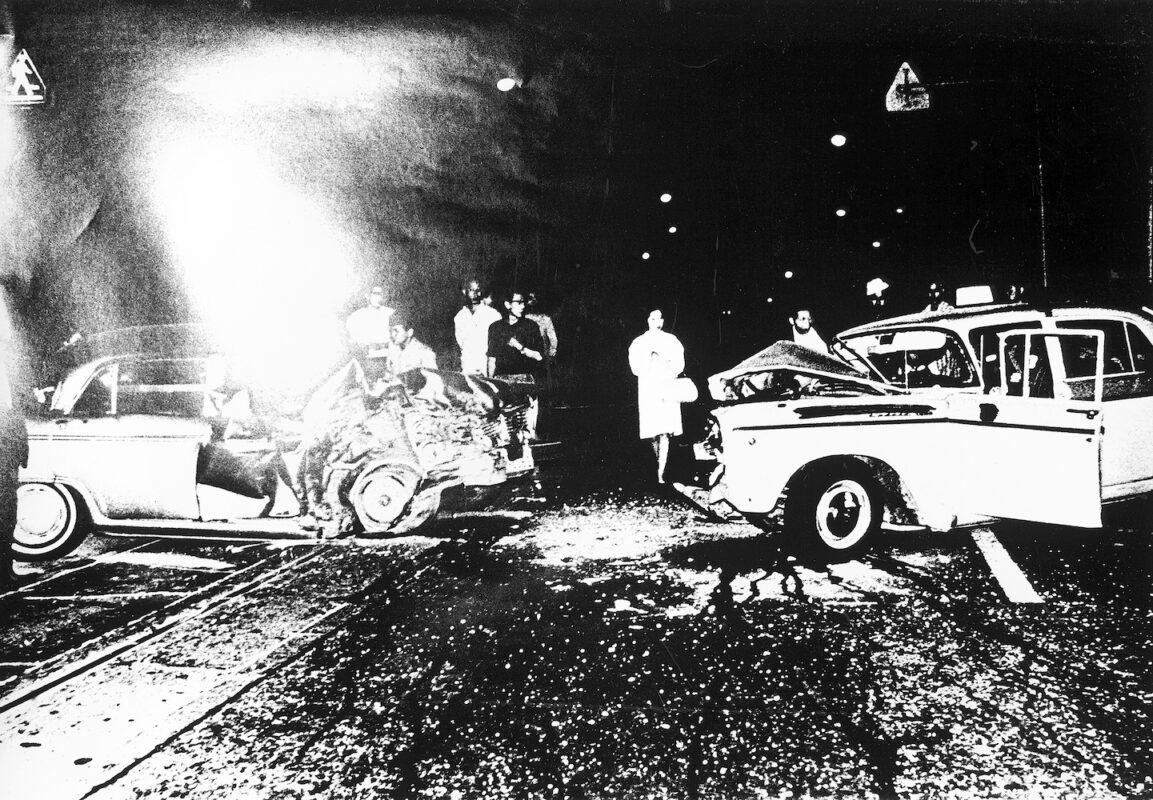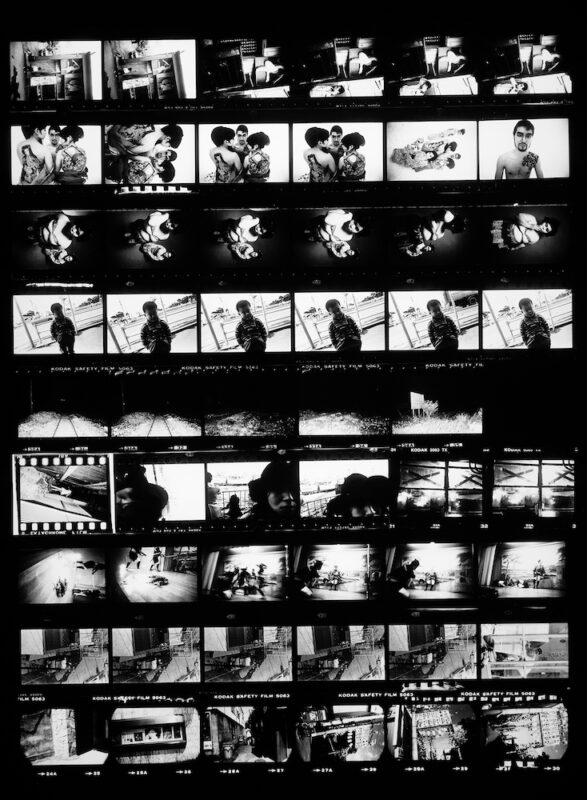Daido Moriyama
A Retrospective
Exhibition review by Mark Durden
Presented on four floors of The Photographers’ Gallery, London, Daido Moriyama: A Retrospective has been deftly curated by Thyago Nogueira of São Paulo’s Instituto Moreira Salles to offer an anti-modernist, Pop, all over display of pictures that extends the montage aesthetic of print media to the gallery wall, writes Mark Durden.
Mark Durden | Exhibition review | 25 Oct 2023
What does it mean today to show Daido Moriyama at The Photographers’ Gallery? In 2012, in an effective and revealing exhibition, Tate Modern presented Moriyama’s photography and silkscreen print variants, books and magazines alongside films, photography and paintings by William Klein. The pairing was significant, for Klein was an important influence through his grainy, blurry out of focus way of rendering the city in his 1956 book Life is Good and Good for You in New York. Can this new show of Moriyama say anything new? Curated by Thyago Nogueira and accompanied by a substantial new book, Daido Moriyama: A Retrospective has toured via Europe from São Paulo’s Instituto Moreira Salles in 2022. Presented on four floors of The Photographers’ Gallery, photographic images are everywhere, framed in grids, pasted on walls, on video screens, projected and in books and magazines in vitrines. The Tate Modern display of Moriyama was more modernist and restrained in comparison.
Perhaps the curatorial approach at The Photographers’ Gallery is more in keeping with Moriyama’s approach to photography. The often-made point is that Moriyama is a photographer for print-reproduction, that the book is his primary format. This anti-modernist, Pop, all over display of pictures is in keeping with this, extending the montage aesthetic of print media to the gallery wall.
The show begins on the top floor, accessed by a lift, its interior pasted with repeated images of a mascaraed eye, an appropriate cue to the image glut that awaits. Moriyama’s aesthetic or vision is defined in relation to the US, with Andy Warhol as well as Klein big influences. Warhol was encountered aptly through reproductions, by way of the exhibition catalogue of his 1968 Swedish retrospective at Moderna Museet. But his work also needs to be seen in terms of the destruction and defeat of Japan – Moriyama was seven when atomic bombs obliterated Nagasaki and Hiroshima – as well as its occupation by US forces after 1951 and its transformation by American consumer culture.
The exhibition begins with his 1968 book Japan: A Photo Theater in the form of both a grid of selected photographic images and a video screen presentation of the book. As the text panel highlights, the point is that the book is assembled from photographs recomposed from earlier editorial pictures in magazines, a deliberate break from the sequencing and clarity of the picture essay, treating photographs as “fragments” according to Moriyama. Disjuncture and discordance characterise the pictures, many of them grainy, blurred and taken off-kilter. They detail the collisions of a Japan in transformation, the miraculous and bizarre worlds associated with Kabuki performances and the avant-garde theatre troupe Tenjō Sajiki, mixed in with observations of life on the street: a shaven-headed man on all fours, two upright and smartly dressed young Japanese shoppers, a woman fearful behind her partly opened but chained door, two women in traditional Japanese dress, the big tail fins of an American car. The lopsided photograph of a television screen with the fragmentary cartoon image of female lips and teeth, in its cheery but plastic expression, accords with the general unsettling of human values and expressions in the series. The book closes with a series of human foetuses in formalin, one of which is included in the grid display of pictures: a life still born, an allegory of photography itself.
The top floor defines what is now his signature aesthetic. The analogue process is evident throughout – grain, blur and deliberate high-contrast. In a feature for Asahi Camera, the oiled flesh of overcrowded beachgoers seems irradiated, pleasure is linked with death. Bleached out figures recur, with light as a destructive force. A series of blow-ups from a traffic poster from National Police agency showing a graphic car crash makes a homage to both Warhol’s Death and Disaster silkscreens (1962-65) as well as Weegee. Another series includes a fuzzy broadcast image of Bill Eppbridge’s well-known photograph of Robert Kennedy’s assassination. The fourth floor closes with his photography for Provoke magazine, his features about sex and commodities in two of its four issues. In a display drawn from his series Eros (1969), a sequence of blurred images of an anonymous naked lone female in a hotel room is framed by an explanatory wall text referring to the issue’s critique of ‘capitalism’s suppression of individual desire through which real feelings were progressively repressed and replaced by the consumption of images.’ Moriyama’s photographs of displays of supermarket products represent a degraded Pop aesthetic – the image deterioration or break-up through reproduction becomes integral to the picturing, a counter to the fetishism of commodities.
The third floor begins with a grid of colour photographs, dating from the late 1960s, and on a facing wall, a colour vinyl print blow-up of one of them. It shows Moriyama behind the camera, reflected in a mirror, which also shows the face of a young Japanese woman, slightly out of focus and looking at the photographer and us. For all the ambiguities set up through the mirror, like Eros, it is an all too familiar dynamic. Women are a constant in his street photography – among the block of colour images is his memorable and often reproduced flash-lit photo of a woman running away from the camera barefoot over rough and sharp-looking debris in a back alley in Shinjuku. The picture makes explicit the predatory menace we are invited to assume is allied with the photographer. Of course, the predatory male photographer was, and still is, part and parcel of street photography: Lee Friedlander ironicised it brilliantly in his 1970 book Self Portrait, whilst Garry Winogrand both indulged and joked with it in his celebratory 1975 book Women are Beautiful.
Amidst the glut of images, one almost loses the radicality of his book Farewell Photography (1972), his goodbye that certainly marked an existential crisis but was never in the end a goodbye. The complete layout from Farewell is presented as a wallpaper installation, in sequence. Not that sequencing makes much difference. On the wall, the pictures are less abrasive than in book form. Whilst the book is lost among other books and magazines in one of the vitrines, the whole book is shown on a video screen in the reading room on the second floor. The wall text includes his remark about how it was made against the ‘naivety to think that you could try and create masterpieces.’ It is of course ironic now that the book is unequivocally a masterpiece. Many of the images are drawn from the growing images he had amassed and accumulated. For Japan: A Photo Theater, he reshuffled pictures to break sense, but here he goes further as the pictures are so degraded – some were printed from negatives picked up from the darkroom floor. There are blanks and voids, grainy fields, solarised images, analogue noise and blur shrouding and obscuring what images remain discernible.
Towards the end of the show, there is a wall-sized blow-up of a photograph of a female mannequin head, adorned with mirrored sunglasses, one lens reflecting a woman from the street and the other the photographer. It is part of a recent work called Pretty Woman, an all-over wall installation of pasted photographic images, both colour and black-and-white, which, according to the captioning text overlaid on the wallpaper of images, ‘offers a garish immersion into urban consumerism through the trope of the female figure, in all its forms.’ The show invites us to see a shift in the work – a clear move from Farewell, which was dominated by disfiguring or the ruination of representation to a photography of the world, the streets of Japan and other cities, beginning in the early 1980s. But with this embrace of what the curator refers to as “the visual lyricism” of street photography, the thematic is the same – the link between commodities and woman in Pretty Woman is a variant from his two series in Provoke, but now played out also using colour and in response to urban spaces choking with images. A generous reading might say there is a critique in the emphasis on vacuity, for example, the mannequin female head. There is a deathliness to photographic reproduction in Farewell and it is also here. Moriyama once referred to the all-over display of photographs as akin to a menu from which the spectator could choose pictures – but we are spoilt by choice. There are too many images. The show began with the re-assembly of photographs as fragments for his first book. It ends with a three-screen projection (with an accompanying soundtrack) from his ongoing magazine Record, which initially ran in 1972-73 and was relaunched in 2006 with more than 50 editions, in turn becoming a regular way of publishing his photography.
This is a very thorough, comprehensive and well-curated show. It does open up new insights into his work and one does get the sense it brings us closer to what, for better words, one might call Moriyama’s vision. In a recent documentary video included in the show, Moriyama refers to how “the world is erotic”. It links with earlier remarks about street photography in a film made for the Tate, where he remarked how “cities are enormous bodies of people’s desires”. For all the understandable buzz and excitement over this blockbuster show, such remarks are troubling when his street photography is so clearly centred on women. Whether the figure of the woman is a trope for consumerism or not, it does not matter. The world has moved on but Moriyama’s art has not. ♦
Images courtesy the artist and The Photographers’ Gallery, London © Daido Moriyama
Daido Moriyama: A Retrospective runs at The Photographers’ Gallery, London, until 11 February 2024.
—
Mark Durden is an academic, writer and artist. He is Professor of Photography and the Director of the European Centre for Documentary Research at the University of South Wales. He works collaboratively as part of the artist group Common Culture and, since 2017, with João Leal, has been photographing modernist architecture in Europe.

